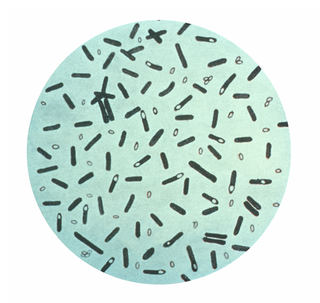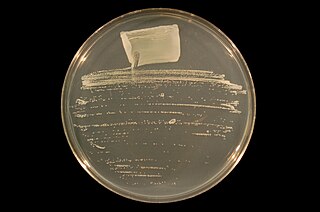
The Korarchaeota is a proposed phylum within the Archaea. The name is derived from the Greek noun koros or kore, meaning young man or young woman, and the Greek adjective archaios which means ancient. They are also known as Xenarchaeota. The name is equivalent to Candidatus Korarchaeota, and they go by the name Xenarchaeota or Xenarchaea as well.

The Chlamydiota are a bacterial phylum and class whose members are remarkably diverse, including pathogens of humans and animals, symbionts of ubiquitous protozoa, and marine sediment forms not yet well understood. All of the Chlamydiota that humans have known about for many decades are obligate intracellular bacteria; in 2020 many additional Chlamydiota were discovered in ocean-floor environments, and it is not yet known whether they all have hosts. Historically it was believed that all Chlamydiota had a peptidoglycan-free cell wall, but studies in the 2010s demonstrated a detectable presence of peptidoglycan, as well as other important proteins.
Pseudoalteromonas is a genus of marine bacteria. In 1995, Gauthier et al proposed Pseudoalteromonas as a new genus to be split from Alteromonas. The Pseudoalteromonas species that were described before 1995 were originally part of the genus Alteromonas, and were reassigned to Pseudoalteromonas based on their rRNA-DNA analysis.

Halomonadaceae is a family of halophilic Pseudomonadota.

The Clostridiaceae are a family of the bacterial class Clostridia, and contain the genus Clostridium.
Alteromonas is a genus of Pseudomonadota found in sea water, either in the open ocean or in the coast. It is Gram-negative. Its cells are curved rods with a single polar flagellum.
Pseudoalteromonas piscicida is a marine bacterium. It is known to produce a quorum sensing molecule called 2-heptyl-4-quinolone (HHQ), which functions as a bacterial infochemical. Research into the effects of this infochemical on phytoplankton is currently being conducted by Dr. Kristen Whalen of Haverford College.

Ensifer is a genus of nitrogen-fixing bacteria (rhizobia), three of which have been sequenced.
Staphylococcus vitulinus is a Gram-positive, coagulase-negative member of the bacterial genus Staphylococcus consisting of clustered cocci. The species was originally isolated from food sources such as beef, chicken, lamb, and other meats, as well as animals including mammals like horses, voles, and whales. Initially named Staphylococcus vitulus, the name was later corrected to Staphylococcus vitulinus to adhere to proper Latin grammar.
Pseudoalteromonas aurantia is an antibacterial-producing marine bacterium commonly found in Mediterranean waters. In 1979, Gauthier and Breittmayer first named it Alteromonas aurantia to include it in the genus Alteromonas that was described seven years earlier, in 1972 by Baumann et al. In 1995, Gauthier et al renamed Alteromonas aurantia to Pseudoalteromonas aurantia to include it in their proposed new genus, Pseudoalteromonas, which they recommended splitting from Alteromonas.
Pseudoalteromonas citrea is a yellow-pigmented marine bacterium that is antibiotic-producing and was isolated from Mediterranean waters off Nice. Originally named Alteromonas citrea, nearly two decades later it was reclassified as part of the Genus Pseudoalteromonas.
Pseudoalteromonas distincta is a marine bacterium.
Pseudoalteromonas elyakovii is a marine bacterium.
Pseudoalteromonas espejiana is a marine bacterium.
Pseudoalteromonas rubra is a marine bacterium.
Pseudoalteromonas tetraodonis is a marine bacterium isolated from the surface slime of the puffer fish. It secretes the neurotoxin, tetrodotoxin. It was originally described in 1990 as Alteromonas tetraodonis but was reclassified in 2001 to the genus Pseudoalteromonas.
Pseudoalteromonas undina is a marine bacterium isolated from seawater off the coast of Northern California. It was originally classified as Alteromonas undina but was reclassified in 1995 to the genus Pseudoalteromonas.
Thermoanaerobacter kivui is a thermophilic, anaerobic, nonspore-forming species of bacteria.
Dialister pneumosintes is a nonfermentative, anaerobic, gram-negative rod that grows with small, circular, transparent, shiny, smooth colonies on blood agar. D. pneumosintes has been recovered from deep periodontal pockets, but little is known about the relationship between the organism and destructive periodontal disease.
Alkalihalobacillus is a genus of gram-positive or gram-variable rod-shaped bacteria in the family Bacillaceae from the order Bacillales. The type species of this genus is Alkalihalobacillus alcalophilus.




